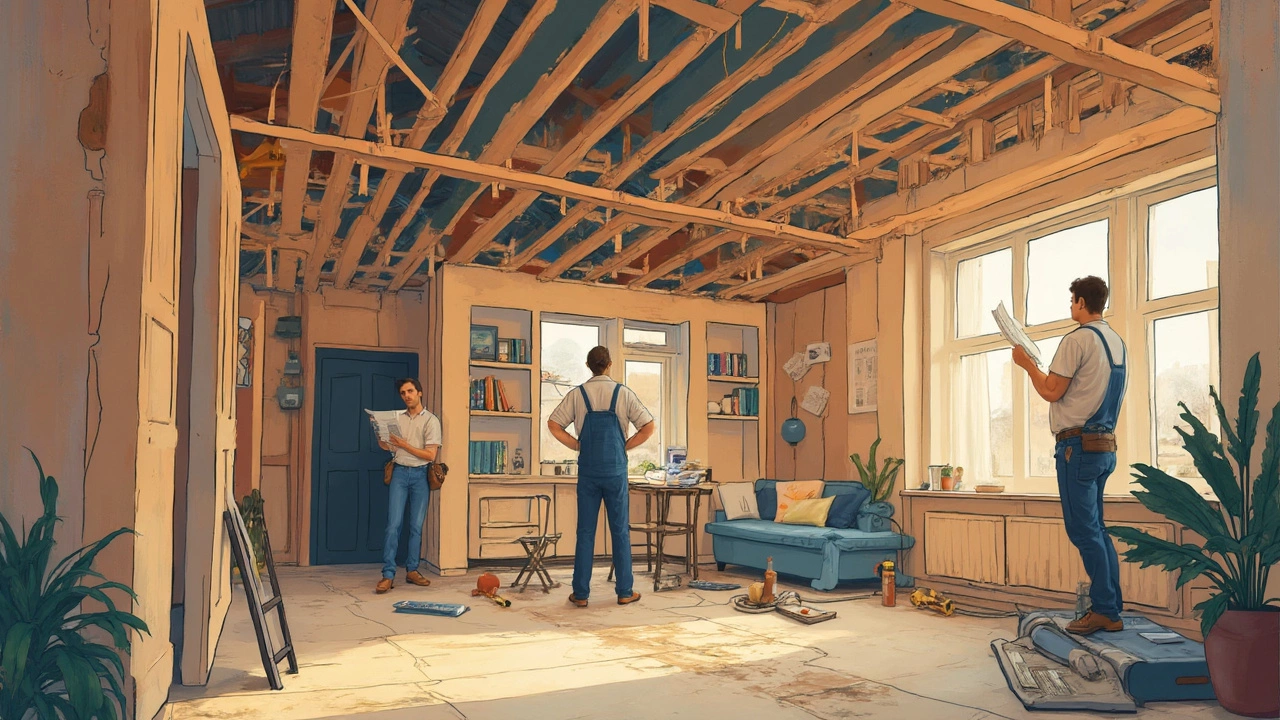Loft Issues: What Can Go Wrong and How to Fix It
If you’ve ever opened the attic door and felt a cold draft, seen water stains on the ceiling, or heard a strange creak, you’re dealing with loft issues. These problems not only make your home uncomfortable, they can cost you money if you ignore them. The good news is most loft issues are easy to spot and even easier to fix with a little know‑how.
Common Problems You’ll Spot
1. Roof leaks. Water stains, damp patches, or mould on the ceiling are tell‑tale signs. Leaks usually start at roof joints, valleys, or around chimneys. If you notice a dark line on the timber during a dry spell, that’s a leak waiting to spread.
2. Poor insulation. A cold loft means heat escapes, raising your energy bills. Feel the rafters – if they’re chilly in winter, you need more insulation. Look for gaps between the roof boards and the insulation material.
3. Bad ventilation. Too much moisture leads to condensation and rot. If you see a musty smell or water droplets on the beams, the loft isn’t breathing properly. Check for blocked vents or missing roof lights.
4. Structural cracks. Cracks in the joists or rafters can weaken the whole roof. Small cracks are common, but wide or growing cracks need professional attention.
5. Pest entry. Small holes or chewed wood often mean rodents or insects have moved in. They can damage wiring and insulation, creating fire hazards.
Simple Steps to Prevent Future Trouble
Start with a quick visual inspection twice a year – once after winter and once after summer. Walk around the roof, check the flashing, and look for missing or broken tiles. Inside the loft, pull the insulation aside and feel the timber. Warm wood means good insulation, cold wood means you need more.
If you find a leak, seal it right away with roofing tape or a proper sealant. For insulation gaps, use foam board or mineral wool that fits snugly between the beams. When adding insulation, remember to keep a gap for ventilation – a few centimetres of air space lets moisture escape.
Ventilation can be improved by installing roof vents or opening existing ones. Even a simple ridge vent can make a big difference. Clear any debris that blocks these vents, and check that the vent covers are not rusted.
For structural cracks, a DIY fix works only for hairline cracks. Use a wood filler or epoxy for small spots, but call a professional if the crack is wider than 5 mm or if it keeps growing.
To keep pests out, seal any small holes around pipes, wires, or roof vents. A steel mesh screen over vents stops birds and larger animals. Trim any tree branches that touch the roof, as they provide a bridge for squirrels and birds.
Finally, keep a maintenance log. Write down what you checked, what you fixed, and when you did it. This simple habit saves you from forgetting a problem until it becomes expensive.
Loft issues may seem small, but they affect your whole house. By spotting leaks, improving insulation, ensuring ventilation, and sealing up cracks, you protect your home and lower energy costs. Keep an eye on your loft, make a few quick fixes, and you’ll enjoy a dry, warm, and pest‑free space for years to come.

Disadvantages of Loft Conversions: Why It's Not Always the Best Option
Feb 7, 2025, Posted by Damon Blackwood
Loft conversions can be an attractive solution for homeowners seeking more space without moving, but they come with several drawbacks. These include potential legal requirements, unexpected architectural challenges, and changes to your home's thermal efficiency. Additionally, noise, disruption during renovation, and the possibility of lower resale value are concerns. Before committing to a loft conversion, it's crucial to weigh these factors carefully.
MORESEARCH HERE
Categories
TAGS
- foundation repair
- commercial construction
- construction
- new builds
- home improvement
- home renovation
- bathroom renovation
- construction materials
- home foundation
- renovation tips
- residential construction
- building types
- contractor
- foundation cracks
- home construction
- architectural services
- building codes
- construction differences
- home inspection
- kitchen installation